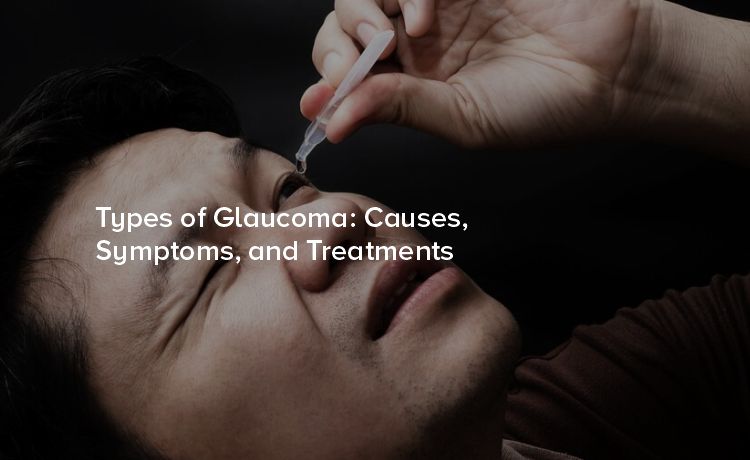
Glaucoma, often called the "silent thief of sight," is a group of eye conditions that cause damage to the optic nerve. This damage is typically the result of elevated pressure within the eye (intraocular pressure) and, if left untreated, can lead to permanent vision loss.
Glaucoma is not a single disease but a group of eye disorders that share a common characteristic: damage to the optic nerve. The optic nerve plays a crucial role in transferring visual information from your eye to your brain. When this nerve becomes damaged, it can lead to blind spots in your vision or, in severe cases, complete blindness.
The condition often develops gradually without presenting symptoms in its early stages, making regular eye exams essential. While elevated intraocular pressure is a major risk factor, glaucoma can also occur in people with normal eye pressure (known as normal-tension glaucoma).
Causes
Primary open-angle glaucoma is the most common type of glaucoma. It occurs when the eye's drainage system, known as the trabecular meshwork, becomes partially blocked. This results in a slow build-up of intraocular pressure, which gradually damages the optic nerve. Risk factors include age, family history, higher intraocular pressure, and being of African or Hispanic descent.
Symptoms
POAG develops slowly and is usually asymptomatic in its early stages. Over time, individuals may notice blind spots in their peripheral vision, which can progress to tunnel vision if untreated.
Treatment
POAG is often managed with medications, such as prescription eye drops that lower eye pressure by reducing fluid production or increasing drainage. Additional options include laser therapy (like selective laser trabeculoplasty) or surgery to aid fluid drainage.
Causes
Angle-closure glaucoma, also known as closed-angle glaucoma, occurs when the drainage angle between the iris and cornea becomes physically blocked. This prevents fluid from exiting the eye, leading to a sudden increase in intraocular pressure. While this condition can develop slowly (chronic angle-closure glaucoma), it often presents as an acute attack.
Symptoms
Acute angle-closure glaucoma is a medical emergency. Symptoms include severe eye pain, headache, nausea, blurred vision, and seeing halos around lights. Chronic cases may develop more gradually with mild vision changes.
Treatment
Acute angle-closure glaucoma requires immediate medical attention. Treatment often includes medications to quickly lower eye pressure and laser or surgical procedures, such as peripheral iridotomy, to create a new drainage pathway.
Causes
Normal-tension glaucoma is a form of open-angle glaucoma where optic nerve damage occurs despite normal intraocular pressure levels. The exact cause is not fully understood, but it is believed that poor blood flow to the optic nerve or increased sensitivity of the nerve may play a role. Risk factors include a family history of glaucoma, low blood pressure, and conditions like migraines.
Symptoms
Similar to POAG, NTG progresses slowly and may result in peripheral vision loss. Blind spots may become noticeable over time.
Treatment
Treatment for NTG focuses on reducing intraocular pressure even further. This may involve the use of eye drops, laser therapy, or surgery. Additionally, measures to optimise blood flow to the optic nerve, such as managing systemic health, may be recommended.
Causes
Congenital glaucoma is a rare condition that occurs in infants and young children due to developmental abnormalities in the eye's drainage system. It is usually an inherited condition caused by genetic mutations.
Symptoms
Signs of congenital glaucoma include unusually large eyes, sensitivity to light, excessive tearing, and cloudy corneas. Parents may notice these signs early in their child's development.
Treatment
Congenital glaucoma often requires surgical intervention to correct drainage and reduce intraocular pressure. Early diagnosis and treatment are crucial to preserving the child’s vision.
Causes
Secondary glaucoma arises as a result of another medical condition, trauma, or medication. Conditions such as uveitis (eye inflammation), diabetes, or prolonged steroid use can contribute to its development. Eye injuries and surgeries can also increase the risk.
Symptoms
Symptoms vary depending on the underlying cause but may include redness, pain, blurred vision, and increased intraocular pressure.
Treatment
Treating secondary glaucoma involves addressing the underlying condition while also managing intraocular pressure with medications, laser therapy, or surgery.
Glaucoma can affect anyone, but certain factors increase the risk, including:
While glaucoma cannot always be prevented, early detection and intervention can significantly reduce the risk of vision loss. Here's how you can protect your eye health:
Glaucoma is a leading cause of irreversible vision loss, but it doesn't have to be. By understanding the different types of glaucoma, recognising their symptoms, and seeking early treatment, you can take charge of your eye health.